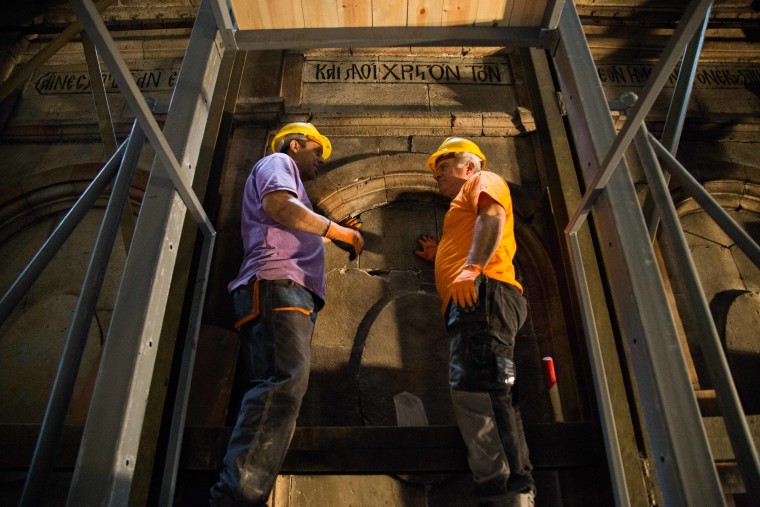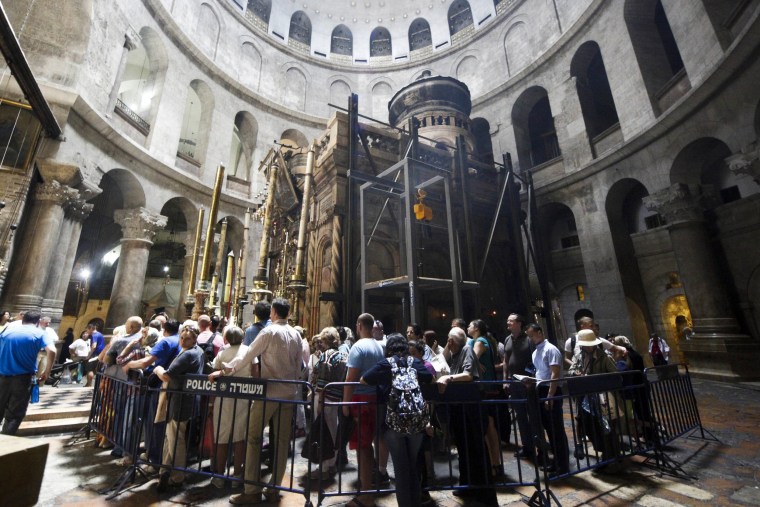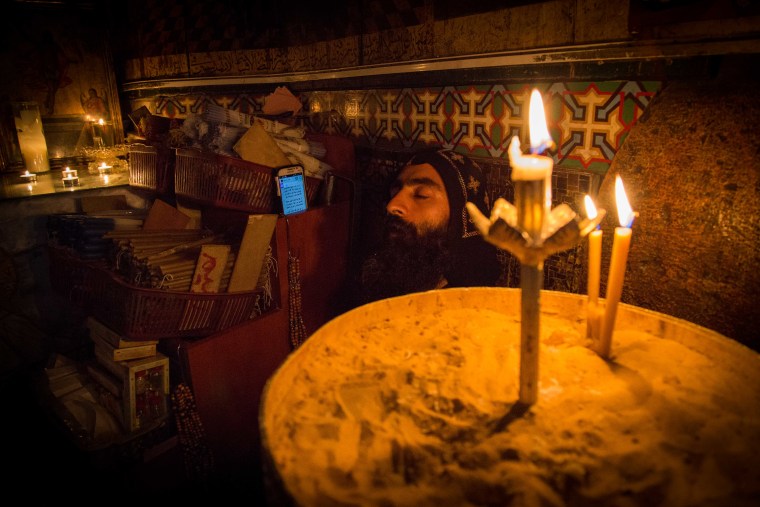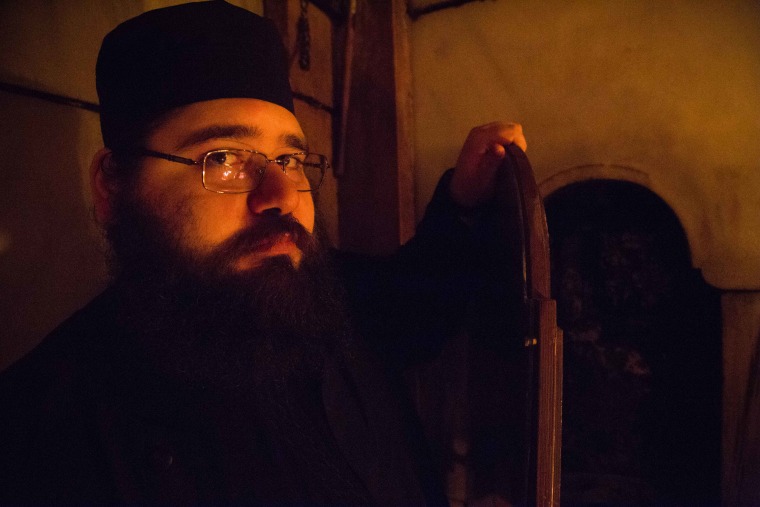JERUSALEM — It’s a modern-day miracle.
After centuries of turf wars and even brawls, the dueling denominations overseeing Jerusalem’s Church of the Holy Sepulchre have collectively approved much-needed repairs for one of Christianity’s holiest sites.
Infighting between clerics had long blocked renovations to the church, where Jesus is believed to have been crucified, buried and resurrected.
Now the chamber housing Jesus' tomb, known as the Holy Edicule, is getting a face-lift.

Antonia Moropoulou, a chemical engineer at the National Technical University in Athens who is managing the repairs, admits her team's job won't be easy.
“We have very difficult and challenging work here,” said Moropoulou, who is leading a 25-person team. "We discovered by nondestructive techniques that there are cracks on the holy rock which surround the tomb.”
The Holy Sepulchre was first built in 335 A.D., only to be destroyed by the Persians around 300 years later and then rebuilt by Byzantine Emperor Constantine Monomachus in 1048. In 1927 after a major earthquake, a protective system of iron scaffolding and supports were installed.
Related: Millions of Russian Christians Embrace Ritual
The cracks Moropoulou's team is repairing were made by the heavy pillars placed on the rock that supports the dome sitting on the Edicule. It will be the first such work to reinforce and conserve the structure, which is considered so fragile that Israeli police briefly shut it down after the country's Antiquities Authority declared the building unsafe in 2015.
It is a painstaking job — not least because the structure above the spot where Christian tradition says Jesus' body was anointed, wrapped in cloth and buried before his resurrection is in bad shape.
The Roman Catholic, Greek Orthodox and Armenian churches that are responsible for maintaining separate sections have disagreed and even clashed over the centuries. In 2008, an argument between Greek Orthodox and Armenian monks broke out into an all out fight.
So the fact that the different denominations agreed to the restoration is a major achievement.
"We equally decided the required renovation was necessary to be done, so we agreed upon it," Rev. Samuel Aghoyan, the top Armenian official at the church, told the AP.
Jordan’s King Abdullah has also said he would help pay for the project himself. Bishop William Shomali, the church's vicar in Jerusalem, said in a statement released by the Vatican on June 7 that the king's announcement illustrates his "concern to preserve the heritage of Christianity."

Jordan controlled the Old City of Jerusalem until Israel captured it in 1967 and continues to play a role safeguarding Muslim and Christian holy sites.
For now, Moropoulou's team is slowly and carefully removing the marble slabs covering the Edicule. Restorers then clean each slab — which are coated in black carbon deposits from pilgrims’ candles — with cotton buds dipped in Ethanol. For centuries, pilgrims have also put out their candles on the marble, damaging the stone.
The restoration project, expected to be finished on March 2017, is about more than just preserving a building, according to Moropoulou.
“This holy site is a symbol of resurrection and peace,” she said. “We need to preserve all the layers of this holy place in order to educate the future generations.”

